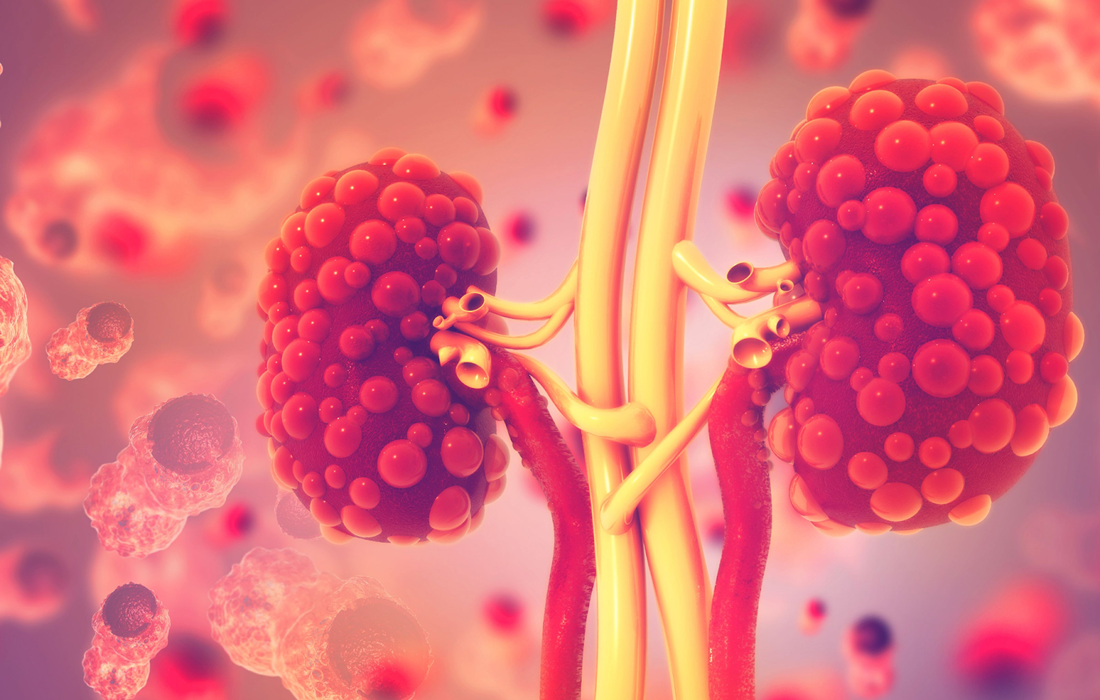Regenerative Medicine News and General Information
New Gene Therapy Target for Polycystic Kidney Disease
Polycystic kidney disease is an inherited disease that involves bilateral renal cysts. The condition is broadly divided into 2 forms: autosomal dominant polycystic kidney disease (ADPKD) and autosomal recessive polycystic kidney disease (ARPKD).
ADPKD is one of the most common inherited disorders in humans and the most frequent genetic cause of kidney failure in adults, accounting for 6-8% of patients on dialysis in the United States, which patients typically inherit one mutated copy of PKD1 (or PKD2) and one normal copy. It is a multisystemic and progressive disorder characterized by cyst formation and enlargement in the kidney and other organs (eg, liver, pancreas, spleen). Clinical manifestations usually begin in the third to fourth decade of life, but cysts may be detectable in childhood and in utero. Up to 50% of patients with ADPKD require renal replacement therapy by 60 years of age.
ARPKD is characterized by cystic dilatation of renal collecting ducts associated with hepatic abnormalities of varying degrees, including biliary dysgenesis and periportal fibrosis. The disorder is usually diagnosed in infants and children, although hepatic involvement may not manifest in neonates (50-60%).
Signs and symptoms
Pain is the most common initial complaint, it is in the abdomen or back, and it is almost universally present in patients with ADPKD.
The pain can be caused by any of the following:
- Enlargement of one or more cysts
- Bleeding: May be confined inside the cyst or lead to gross hematuria with passage of clots or a perinephric hematoma
- UTI (eg, acute pyelonephritis, infected cysts, perinephric abscess)
- Nephrolithiasis and renal colic
- Rarely, a coincidental hypernephroma
Treatment
There is no treatment that actually cures this disease, the intervention is just to improve the complication that the patient may present , for example medicine to control de high blood pressure, antibiotics to treat repeated urinary tract infections and some drugs to slow kidney function decline.
Researchers identify a gene therapy target for polycystic kidney disease
PKD1 contains a binding site for miR-17, a microRNA that is highly expressed and active in models of ADPKD. So, Dr. Patel and his colleagues asked if blocking the binding of miR-17 to PKD1 could prevent kidney cyst formation.
The researchers deleted the miR-17 binding site from PKD1 mRNA in cell cultures and an ADPKD mouse model. Their results indicated that deletion of the binding site increased stability of the mRNA strand, raised Polycystin-1 levels, and decreased kidney cyst growth. Moreover, the group found that blocking miR-17 binding to PKD1 mRNA with an anti-miR-17 drug after cyst formation also decreased cyst growth, indicating that this interaction could be a promising target for polycystic kidney disease (PKD) treatment.
These findings may pave the road to development of treatment targeting this mutation , even if the disease is established a treatment may help to stop the progression of the cyst growth.
SOURCE:
Ronak Lakhia, Harini Ramalingam, Chun-Mien Chang, Patricia Cobo-Stark, Laurence Biggers, Andrea Flaten, Jesus Alvarez, Tania Valencia, Darren P. Wallace, Edmund C. Lee, Vishal Patel, (August 15 , 2022). PKD1 and PKD2 mRNA cis-inhibition drives polycystic kidney disease progression. Nature Communications. Retrieved from: https://www.nature.com/articles/s41467-022-32543-2
IMAGE:

